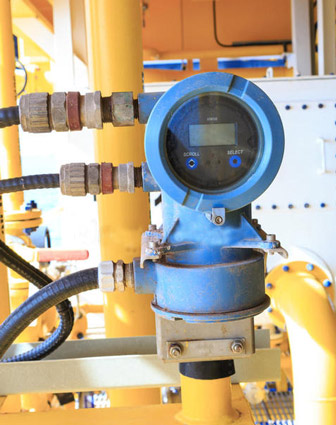How to Install Pressure Sensor
It is very necessary to research the installation before the pressure sensor is officially put into operation. In order to make the pressure sensor reach the measurement accuracy, in addition to the correct selection and calibration, it is also necessary to pay attention to the correct installation of the entire system. The correct system installation includes the opening position of the pressure inlet, the proper laying of the connecting duct, and the mounting position of the meter.
The multimeter is the most commonly used tool in the instrumentation field. It can be used to judge the on/off status of the pressure sensor, whether the output value is accurate, etc.
2. Small calibrator
Under the premise of knowing the pressure, the small calibrator can detect whether the output signal is accurate, and even simulate the on-site thermal parameters,then output to the secondary instrument for indirectly judging whether the problem is in the secondary instrument or the field instrument.
- Key points of the pressure sensor installation
- The pressure sensor can be installed directly at the measuring point or be installed on the wall, or clamped onto the pipe by using a mounting plate (sensor attachment).
-
The pressure guiding connection hole on the pressure chamber of the press sensor is a threaded hole, and the pressure guiding hole on the joint is an inner taper pipe thread (or an external thread), which can be selected according to needs.

- The pressure sensor can be easily removed from the process piping by unscrewing the two bolts that fasten the joint; turning the joint can change the center distance of the joint.
- In order to ensure the joint seal, the following steps should be taken when tightening: the two fastening bolts should be alternately tightened with the wrenches, and then tighten the torque. Do not tighten one bolt at a time. Sometimes the pressure chamber on the pressure sensor body can be rotated for installing easily. As long as the pressure chamber is vertical, the effect of the liquid column pressure due to the difference in the height of the pressure tubes must be eliminated that is to re-zero the position.
- Install a shut-off valve between the pressure tap and the pressure sensor, and close to the pressure tap.
- Pay attention to whether the pressure sensor is too close to the valve or pump when installing. Because the opening and closing of the valve and the start and stop of the pump will impact the diaphragm of the pressure sensor, causing diaphragm damage;
- Confirm whether there are corrosive gases, solid particles (dust), etc. at the site. In the case of high causticity or dust, the pressure sensor should be cleaned regularly, or directly select the pressure sensor with good corrosion resistance or dustproof effect.
- The high-pressure hydraulic equipment will often impact and damage the diaphragm of the pressure sensor. At this time, we can install a special damper (or install a small damping element on the pressure sensor) to reduce the instantaneous impact force and protect the pressure diaphragm.
- Installation position of the pressure sensor
- The selected installation position should reflect the actual situation of the measured pressure. Select the section of the pipe where the measuring medium flows straightly, do not choose bend, split, dead corners or other places where vortices are easy to form.
- The base mounting surface of the pressure sensor should be as flat and clean as possible without any oil or film. The mounting base itself should have sufficient strength and rigidity, whose strength and stiffness typically required above the pressure sensor itself.
- When measuring the gas pressure, the pressure inlet should be installed at the top of the process pipe, and the pressure sensor should also be installed at the top of the process pipe so that the accumulated liquid is easily injected into the process pipe.
- The pressure guiding tube should be installed in a place with small temperature fluctuations.
- When measuring steam or other high-temperature medium, it is necessary to add a condenser such as a buffer tube (coil), and the operating temperature of the pressure sensor should not exceed the limit.
- When freezing occurs in winter, the pressure sensor installed outside must adopt anti-freezing measures to prevent the liquid in the pressure inlet from expanding due to icing, which may cause damage to the pressure sensor.
- When measuring the pressure of the liquid, the installation position of the pressure sensor should avoid the impact of the liquid (water hammer phenomenon), so as not to cause damage to the pressure sensor.
- When wiring, pass the cable through the waterproof joint or bobbin and tighten the sealing nut to prevent rainwater from leaking into the pressure sensor housing through the cable.
- Put the pressure sensor into use
- Inspection tools on site
The multimeter is the most commonly used tool in the instrumentation field. It can be used to judge the on/off status of the pressure sensor, whether the output value is accurate, etc.
2. Small calibrator
Under the premise of knowing the pressure, the small calibrator can detect whether the output signal is accurate, and even simulate the on-site thermal parameters,then output to the secondary instrument for indirectly judging whether the problem is in the secondary instrument or the field instrument.

